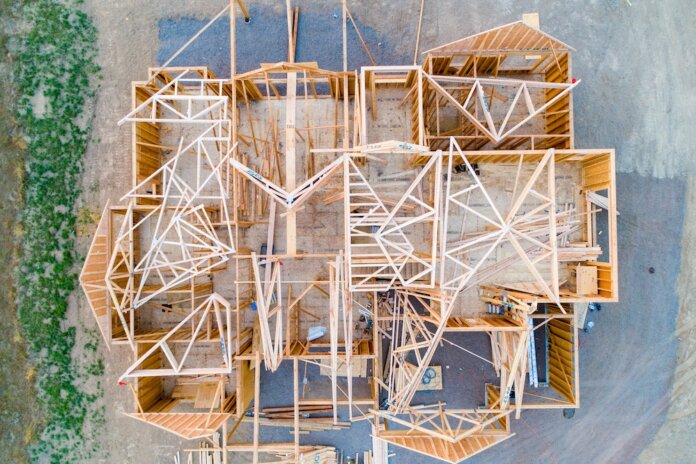Housing starts fell off a cliff in July as demand from homebuyers waned in light of higher mortgage interest rates. In addition, builder confidence declined for an eighth straight month.
Rising costs for construction materials, supply chain constraints and a lack of skilled labor also factored into the slowdown.
As of the end of the month, housing starts were at a seasonally adjusted annual rate of 1.446 million, a decrease of 9.6% compared with June and down 8.1% compared with July 2021, according to estimates from the U.S. Census Bureau and U.S. Department of Housing and Urban Development.
Starts of single‐family homes were at a rate of 916,000, a decrease of 10.1% compared with June.
Starts of multifamily properties (five units or more per building) were at a rate of 514,000, a decrease of 10.0% compared with the previous month.
Regionally, and on a year-to-date basis, combined single-family and multifamily starts were up 10.7% in the Northeast, but down 0.4% in the Midwest, 6.5% in the South and 2.2% lower in the West.
Building permits also decreased – they were at a seasonally adjusted annual rate of 1.674 million, down 1.3% compared with June but up 1.1% compared with July 2021.
Permits for single‐family homes were at a rate of 928,000, a decrease of 4.3% compared with June.
Permits for multifamily dwellings were at a rate of 693,000 in July – an increase of 2.5% compared with the previous month.
Regionally, and year-over-year, permits were down 1.9% in the Northeast, but were up 1.9% in the Midwest, 2.6% in the South and 0.2% in the West.
Housing completions were at a seasonally adjusted annual rate of 1.424 million, an increase of 1.1% compared with June and up 3.5% compared with a year earlier.
“The decline in single-family starts is reflected in our latest builder surveys, as housing demand continues to weaken on higher interest rates while on the supply side builders continue to grapple with higher construction costs,” says Jerry Konter, chairman of the National Association of Home Builders (NAHB), in a release. “Builders are reporting weakening traffic as housing affordability declines.”
“A housing recession is under way, with builder sentiment falling for eight consecutive months while the pace of single-family home building has declined for the last five months,”says Robert Dietz, chief economist for NAHB. “However, multifamily construction remains very strong given the solid demand for rental housing. The number of multifamily 5+ units currently under construction is up 24.8 percent year-over-year.”
Odeta Kushi, deputy chief economist for First American, says housing starts in July “were expected to fall to an annual pace of 1.52 million, but instead fell further, coming in at 1.45 million.”
“The decrease in single-family housing starts mirrors the decline in homebuilder confidence, which turned negative in August, driven by declines in all three components of the index: current single-family home sales, future sales expectations, and traffic of prospective buyers,” Kushi says. “Housing is a primary transmission mechanism for the Federal Reserve and, as monetary tightening has intensified, so has the impact to homebuilding. Builders are responding to a pullback in demand, as rising mortgage rates have dampened affordability and caused would-be buyers to sit on the sidelines.”
Still, “the housing market remains under-built relative to demand for shelter,” she says.
“While builders may respond to the decline in affordability and cooling demand in the purchase market by building fewer single-family homes, it’s possible that they will continue to build more rental units,” Kushi says. “Rents remain elevated, which may incentivize building, despite higher financing costs.”
“The rental and purchase markets are inextricably tied together – a household chooses to rent or buy a home, substituting one for the other based on market conditions, cost effectiveness and lifestyle preferences,” she adds. “Would be home buyers priced out of the purchase market may add to rental demand.”
“For the first time since June 2020, single-family completions are higher than starts, as builders focus on finishing existing projects, rather than starting new ones.”
Photo: Avel Chuklanov














